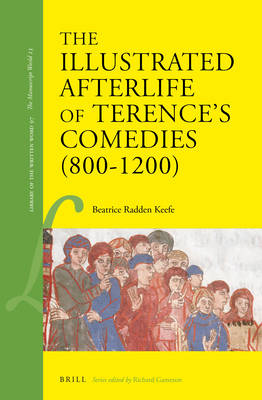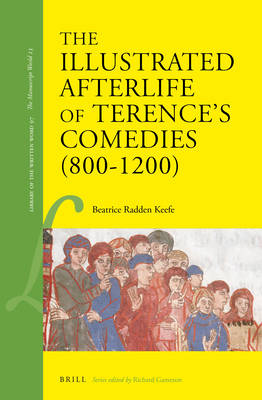
Je cadeautjes zeker op tijd in huis hebben voor de feestdagen? Kom langs in onze winkels en vind het perfecte geschenk!
- Afhalen na 1 uur in een winkel met voorraad
- Gratis thuislevering in België vanaf € 30
- Ruim aanbod met 7 miljoen producten
Je cadeautjes zeker op tijd in huis hebben voor de feestdagen? Kom langs in onze winkels en vind het perfecte geschenk!
- Afhalen na 1 uur in een winkel met voorraad
- Gratis thuislevering in België vanaf € 30
- Ruim aanbod met 7 miljoen producten
Zoeken
The Illustrated Afterlife of Terence's Comedies (800-1200)
Beatrice Radden Keefe
€ 242,95
+ 485 punten
Omschrijving
Widely read as school texts, the comedies by the Roman dramatist Terence have come down to us in hundreds of medieval copies. Fourteen of the manuscripts produced between 800 and 1200 were given some kind of illustration. In this volume, Beatrice Radden Keefe explores the semiotics of the imagery found in the earliest illustrated Terence manuscripts, and its relationship to the iconography of comedy and theatre from antiquity. She examines six further manuscripts to show how later illustrators abandoned this imagery to varying degrees, finding new emphases and creating new layers of meaning. Illustrators of Terence, it is demonstrated here, brought a range of interests to illustrating the comedies, clarifying their narrative, incorporating social commentary and moralisation, and linking them with Christian allegorical traditions.
Specificaties
Betrokkenen
- Auteur(s):
- Uitgeverij:
Inhoud
- Aantal bladzijden:
- 284
- Taal:
- Engels
- Reeks:
- Reeksnummer:
- nr. 97
Eigenschappen
- Productcode (EAN):
- 9789004463318
- Verschijningsdatum:
- 26/10/2021
- Uitvoering:
- Hardcover
- Formaat:
- Genaaid
- Afmetingen:
- 155 mm x 235 mm
- Gewicht:
- 601 g

Alleen bij Standaard Boekhandel
+ 485 punten op je klantenkaart van Standaard Boekhandel
Beoordelingen
We publiceren alleen reviews die voldoen aan de voorwaarden voor reviews. Bekijk onze voorwaarden voor reviews.









